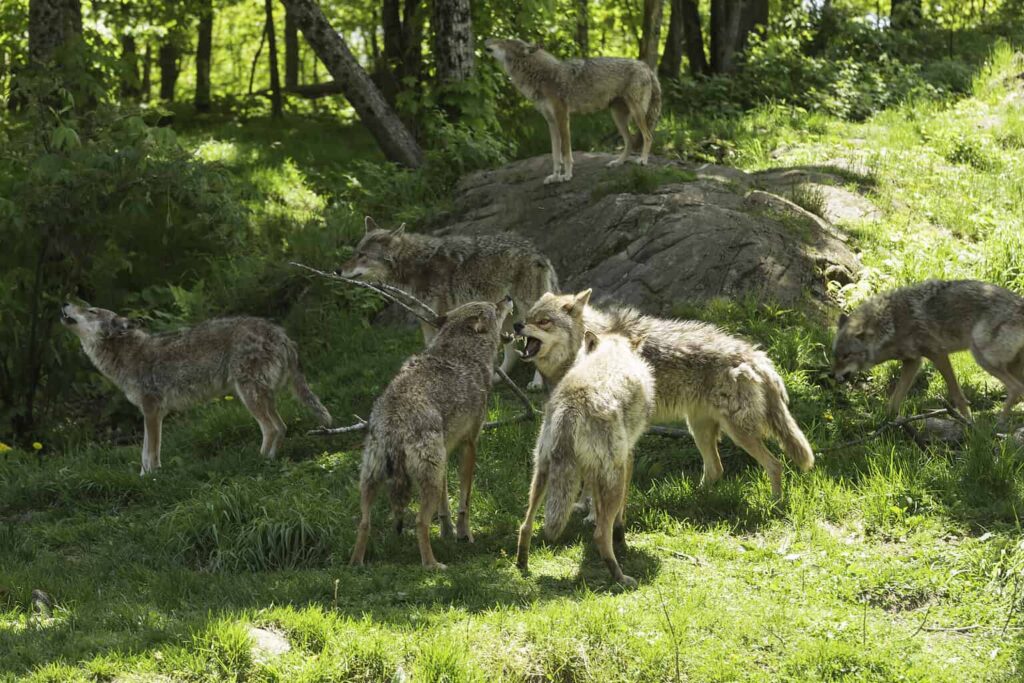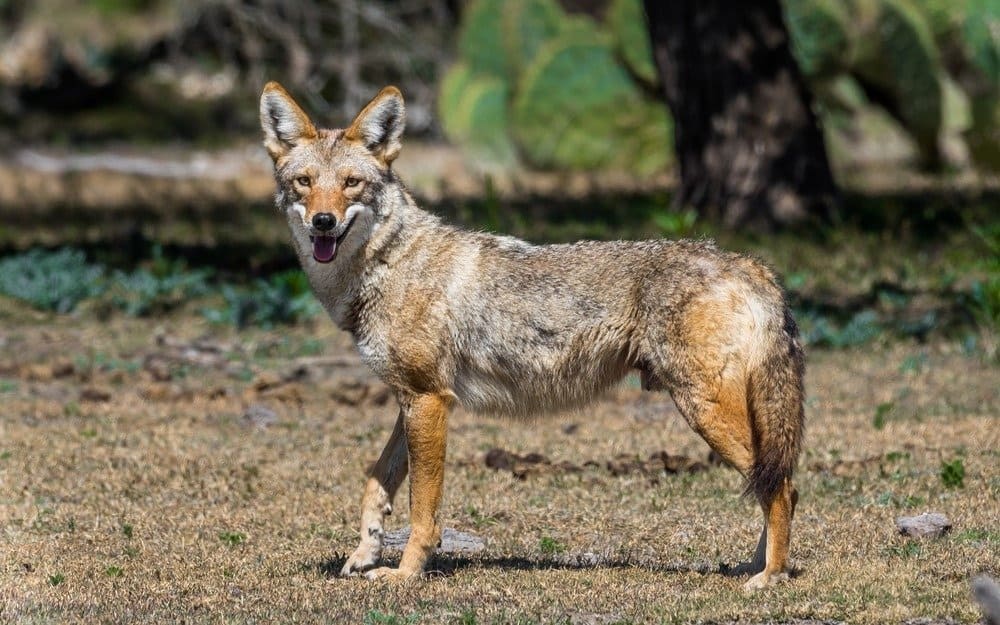Coyotes are vicious predators that can adapt to several climes. Canis latrans, or coyotes, are descendants of a long series of rapacious canines that first appeared 380,000 years ago. They are important players in the ecosystems in which they live and feed on a variety of different creatures. What poor species are so prey to the ferocious coyote? Here, we’ll look into what coyotes consume and how they get their prey.
What are coyotes?
A canid species that is linked to wolves is the coyote. However, they are considerably smaller than their enormous wolf ancestors. The typical male coyote weighs 18 to 44 pounds and has a body length between 3.3 and 4.5 feet. Geographic differences explain the large weight differential, with northern populations weighting more than southern populations. The color of a coyote’s fur varies geographically and also contains various tones of white, gray, and light brown.
Coyotes have been culturally significant to humans for hundreds of years as well. Coyotes are depicted as warriors in Mesoamerican artwork in Teotihuacan and Aztec culture. These animals also appear extensively in Native American artwork and folklore. Amongst different tribes, the coyote has multiple personas including the untrustworthy trickster in southwestern and plains regions, and a companion of The Creator in Chinook, Pawnee, Ute, and Maidu tribes. Coyotes are also the state animal of South Dakota.
Where do they live?
Coyotes have a large distribution covering the majority of North America and Central America. They inhabit as far north as Alaska and as far south as Costa Rica from west to east coast. With such a wide distribution, coyotes are flexible in many different climates and habitats. The versatility of coyotes has allowed them to inhabit different environments including those urbanized by humans.

Coyotes tend to inhabit places where they will not be in direct competition with wolves and cougars. This primarily includes grasslands, prairies, and deserts. The coyote’s range has become far more expansive, however, since wolf populations have dwindled. The red wolf specifically was a species inhabiting the southeastern United States that is currently close to extinction. Coyotes now inhabit grasslands, tundra, deserts, boreal forests, and major cities such as Los Angeles and Denver. Should you worry if there are coyotes in your city? Click here for more information!
Who competes with coyotes for food?
Coyotes have many different predators they must compete against for food. Gray wolves and coyotes have a long history of competition. Coyotes tend to avoid areas where wolves live because the wolves dominate hunting and either kill the coyotes or kill their food supply. In the 19th and 20th centuries, as wolf populations began to decline, coyote populations began to increase. Later, in Yellowstone National Park there was a large population of coyotes. When the once locally extinct gray wolf was reintroduced to the area, the coyote population decreased by 39%. Coyotes also compete with and are preyed upon by cougars. Cougars and coyotes compete for deer in the Sierra Nevada and cougars usually dominate. Cougars do kill coyotes but not to the same degree as wolves.
What do coyotes eat?
Despite being omnivores, coyotes are highly carnivorous and, depending on their habitat, consume a variety of different prey. Coyotes consume larger mammals like white-tailed deer, elk, bighorn sheep, bison, and moose in addition to insects, amphibians, fish, tiny reptiles, birds, and rodents. Wild turkeys, sparrows, and thrashers are some of the birds that coyotes prey upon. The coyote can run at speeds of up to 40 mph and hunts either alone or in packs. Coyotes won’t attack larger ungulates singly; they must attack them in a pack. Even if they are plentiful, coyotes rarely consume toads, shrews, moles, or rats. Additionally, coyotes eat the remains of other animals.
Even if 90% of a coyote’s diet consists of meat, the other 10% is still crucial! Peaches, blackberries, pears, blueberries, apples, carrots, cantaloupe, melons, and peanuts are just a few of the many fruits and vegetables that coyotes consume. Additionally, coyotes eat grass and grains, particularly in the winter.
In areas inhabited by humans, coyotes have adapted to eat what is available. In rural areas, this includes livestock and crop plants, for example, cattle, sheep, maize, wheat, and other produce. In more populated areas, coyotes will eat raccoons, rabbits, domestic pets, roadkill, trash, and garden produce. Regardless of where they are living, coyotes are incredibly versatile and are capable of adapting.
A List of What Coyotes Eat
- Insects
- Amphibians
- Fish
- Reptiles
- Birds
- Rodents
- Deer
- Elk
- Bighorn sheep
- Bison
- Moose
- Thrashers
- Sparrows
- Wild turkeys
- Toads
- Shrews
- Moles
- Rats
- Fruits
- Vegetables
- Peaches
- Blackberries
- pears
- Blueberries
- Apples
- Carrots
- Cantaloupe
- Watermelon
- Peanuts
- Grasses
- Grains
- Raccoons
- Rabbits
- Domestic pets
- Garden produce
How does their diet impact other species?
Coyotes and American badgers get along well together. This indicates that their interaction is advantageous for both of them. American badgers will aid in digging up various rodents when coyotes are hunting them. If they spot a badger, many prey animals will flee from a coyote by running above ground. The prey is exposed both above and below ground when the coyote and badger cooperate. When coyotes and badgers work together, their catch rate rises by 33%.

A Coyote’s diet also impacts other species because of the potential spread of disease and parasites. The coyote carries more diseases and parasites than any other carnivore in North America, likely due to its highly varied diet. Viral diseases carried by coyotes include rabies, canine distemper, canine hepatitis, multiple strains of equine encephalitis, and oral papillomatosis. Coyotes can suffer from mange caused by parasitic mites, can experience tick infestations, and occasionally flea and lice infestations. Coyotes also host and spread parasitic worms such as tapeworms, hookworms, and roundworms. 60-95% of coyotes have at least one tapeworm. This relates to diet because many parasites and diseases can spread during feeding. For example, if coyotes were to feed on cattle with parasites, they are at risk of hosting that parasite.
How are coyotes doing today?
Coyotes currently have the conservation rating “least concern” according to the IUCN. Coyotes currently face little fear of endangerment due to growing populations. Coyotes are threatened by widespread hunting and habitat destruction brought on by human activity.